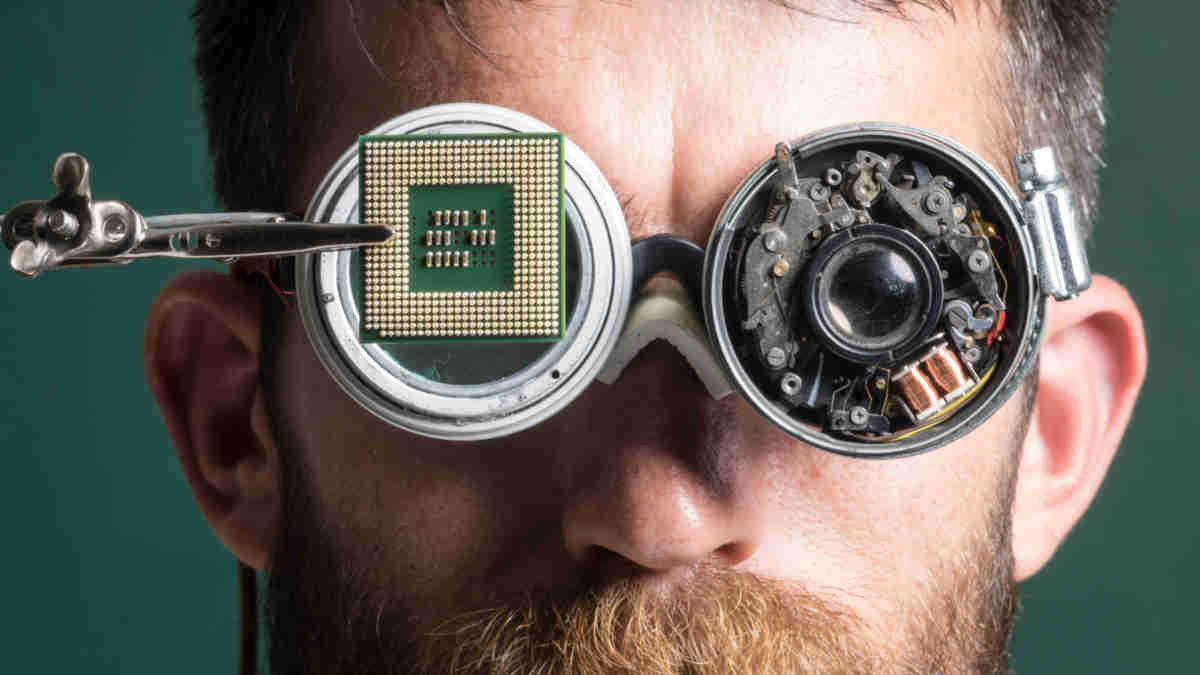Weebit Nano wins the ASX semiconductor race to revenue, partners with Tier-1 foundries

ASX-listed Weebit Nano announced maiden revenue from its ReRAM product. Picture Getty
- ASX-listed Weebit Nano announced maiden revenue from its ReRAM product
- ReRam is billed as the next generation non-volatile memory chip
- We spoke to Weebit Nano’s CEO, Coby Hanoch
Generating first revenue is one of the most important milestones of a tech company’s journey.
For instance, Nvidia hasn’t always been a market darling. It earned its current status as a tech star through decades of innovation and incremental increases in revenue.
Incorporated in 1993, Nvidia earned its first revenue in 1995 and went public via an IPO in 1999. Since debut, Nvidia’s revenue has grown by a staggering 7,000%.
On the ASX, one tech company that has just earned its maiden revenue is the memory chip maker, Weebit Nano (ASX:WBT).
Earlier this month, the company announced its first IP licensing revenue for its embedded Resistive Random-Access Memory (ReRAM) technology.
While this initial licensing fee is relatively small at US$100,000, the company considers the fact that Weebit Nano is no longer “pre-revenue” to be material, as it marks the company’s transition to commercialisation phase.
“Becoming a revenue generating company is always a very important milestone,” Weebit Nano’s CEO, Coby Hanoch, told Stockhead.
“It just happened that the first payment was a small amount of $100,000, but obviously we’re expecting more payments and are expecting it to grow over time.”
Hanoch says that he’s always told shareholders not to expect immediate, rapid growth in revenue because the business model revolves around multiple steps.
“First we sign a licensing agreement, then the customer pays us engineering fees to make the adjustments necessary to their environment.
“So it takes time until we actually start getting the royalties, which are the key element of revenue for us,” Hanoch said.
Moore’s Law and what it means for ReRAM
Like Nvidia, Weebit Nano operates in an industry that has become an integral part of our lives because these days, there’s hardly anything that you can touch that doesn’t have semiconductors in it.
Within this semiconductor domain, you have the memory segment which is currently the largest segment. And within that space, you have two main types of memory: the Volatile Memory, and Non Volatile Memory (NVM).
Weebit focuses on the NVM segment through its ReRAM (resistive random access memory), a technology that’s billed as the next generation NVM.
NVM does not need a constant supply of electricity to store data, and this makes it ideal for applications that require low power consumption, high reliability, and fast access to data.
“Practically every device in the world needs to have some software in it, and that software needs to sit on some memory which is non-volatile,” says Hanoch.
Data shows that NVM is potentially a trillion-dollar market in five or seven years’ time, and as the industry keeps pushing the limits, it could grow even bigger especially now with AI and autonomous vehicles booming so rapidly.
Until today, Flash memory has been a widely used NVM technology, but as the semiconductor industry continues its march toward ever faster and smaller chips, Flash hasn’t been able to catch up.
“Flash has managed to survive for so long. But it’s been hitting many, many walls. It’s just not fast enough,” explained Hanoch.
“Moore’s Law states that everything in semiconductors will continue to shrink, and we’re going to smaller and smaller geometries.
“For example, we’ve been going down from 40 to 28, to 22 nanometers, and into the teens. Now you hear about the more advanced ones going down to five, three to even two nanometers,” he said.
Because everything is shrinking so rapidly, you can put a full system on a single chip these days. You can put a processor and communication like Bluetooth or Wi Fi and all kinds of other elements onto one chip.
“As part of that, you also need to have the non-volatile memory there,” said Hanoch.
“So you’re basically embedding the non-volatile memory into the system on a chip, and that’s why we refer to it as the embedded NVM market.”
The 125 degree Celsius milestone
Last week, Weebit revealed that its ReRAM IP module has been fully qualified in SkyWater’s 130nm CMOS (S130) process at temperatures of up to 125 degrees Celsius.
The qualification, based on a one-transistor one-resistor (1T1R) memory module, leverages Weebit’s previous qualification at these temperatures with CEA-Leti, the reputable research institute for electronics and information technologies.
The 125C temperature is also the temperature specified for Grade-1 automotive applications, which proves the reliability and repeatability of ReRAM IP in high-temperatures.
“Automotive is definitely one of the best known applications where temperatures can be very high, such as the engine or braking system,” said Hanoch.
“The memory chips on these cars also need to be very fast because we’re talking about human lives and when something happens, you want the car to react as fast as possible. Every millisecond counts.”
In addition to automotive, other applications that require memory chips to heat up to 125C include various industrial, IoT, and aerospace products.
“Our partner, the Nasdaq-listed Skywater, has a lot of projects with the US Department of Defence. And the DoD have all kinds of applications that also need to operate at high temperatures.
“So achieving the 125C opens the door to many more applications and potential customers, and that’s the first implication.
“The second implication is that it gives a lot more confidence to the foundries that we’re talking to – that our chips can achieve this high temperature,” Hanoch said.
Partnering with Tier-1 global foundries
Weebit’s long term strategy is to work with the world’s Tier 1 foundries (semiconductor manufacturers that make chips for other companies).
The company has just received the first wafers integrating its embedded ReRAM manufactured in GlobalFoundries’ 22FDX platform. GlobalFoundries is a Nasdaq-listed multinational semiconductor contract manufacturing and design company.
These were the first wafers with Weebit ReRAM manufactured in 22nm, one of the industry’s most steadfast process nodes, and a geometry where embedded flash is not viable.
Weebit has also recently signed a licensing agreement with Tier-1 foundry DB HiTek in South Korea, which further validates the quality of its embedded ReRAM.
Hanoch explained that with a big customer like this, it’s roughly an 18 to 24-month cycle until they actually move into mass production and start generating royalty revenues.
“I think the message that that I hope shareholders would understand is the fact that although we’re engaged with these big guys, the revenues will come down the road, not tomorrow.
“But that potential revenue is very, very big because we’re talking about a very big market,” said Hanoch.
A massive industry
At a macro level, the semiconductor is a massive global sector that has become a very strategic thing at the government level.
For example, the Inflation Reduction Act (IRA) in the US has identified semiconductor manufacturing as one of the industries that needs a huge boost in funding.

Weebit is the only stock on the ASX now at revenue stage that gives Australian investors a direct link into this global industry.
“It’s a huge market. And we have the team, the focus, and the resources,” said Hanoch.
“In the last quarter, we reported more than $80 million of cash in the bank, so we clearly have enough money to go for more than two years, possibly three years.
“And by then, we will have gained strong momentum with the different foundries and with their customers. So I’m extremely bullish right now about our prospects.”
Weebit Nano share price today:
Related Topics
UNLOCK INSIGHTS
Discover the untold stories of emerging ASX stocks.
Daily news and expert analysis, it's free to subscribe.
By proceeding, you confirm you understand that we handle personal information in accordance with our Privacy Policy.








